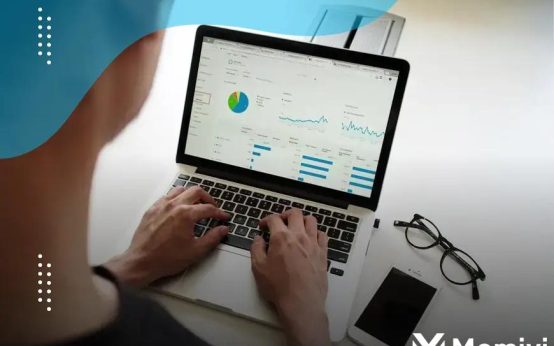
Many self-employed individuals overlook the importance of planning for retirement, but understanding pension options can provide peace of mind and financial security. With various plans available, it’s essential to grasp the benefits and drawbacks of each option. This guide will walk you through understanding your pension options, the tax benefits and incentives available, and the steps you can take to ensure a comfortable retirement. By becoming informed and taking proactive steps now, you can rest assured that your later years will be financially secure.
Understanding Your Pension Options
As a self-employed individual in the UK, understanding your pension options is crucial for securing your financial future. Unlike employees who might have workplace pension schemes set up by their employers, self-employed individuals must take proactive steps to plan for retirement.
Pension Types
There are typically three types of pensions that you can consider: the State Pension, Workplace Pensions, and Personal Pensions. Being self-employed, you’ll mostly be choosing between the State Pension and Personal Pensions.
State Pension
As a self-employed professional, you can still qualify for the State Pension by paying National Insurance Contributions (NICs). It’s a basic income funded by the government once you reach pension age.
Personal Pension
There are several types of personal pension plans available, including Self-Invested Personal Pensions (SIPPs) which offer more control over investment choices and Stakeholder Pensions known for their flexibility and capped charges.
Making the Right Choice
Understanding the differences in fee structures, investment options, and flexibility among these pension plans can help determine which is best suited for your financial goals. Consulting with a financial advisor may provide personalized insights, ensuring you’re not missing out on valuable opportunities.
Bear in mind that pensions are a long-term investment. Regularly reviewing your contributions and the performance of your pension fund is essential to adapting to any changes in your financial situation or retirement goals.
Tax Benefits and Incentives
Exploring tax benefits and available incentives for the self-employed can significantly enhance your retirement savings strategy. In the UK, there are numerous tax reliefs designed to encourage the self-employed to invest in their pensions.
One of the most prominent advantages is the tax relief on personal contributions to your pension pot. When you contribute to a pension scheme, the government facilitates this by adding basic rate tax relief at 20%. This means that if you contribute £80, the tax relief adds another £20, making it a total of £100 in your pension fund.
For higher rate taxpayers, there is the potential to claim additional relief. This requires manually claiming through the self-assessment tax return, allowing up to 40% relief, effectively enhancing your retirement contributions.
Another incentive is the ability to carry forward unused annual allowance from the previous three tax years, offering flexibility in years when your earnings might be more unpredictable. This approach could be beneficial if you experience varying income levels and wish to maximize your contributions in profitable years.
Those who optimize their contributions strategically stand to benefit not only from a potentially larger pension but also from a more manageable tax bill during their working years. Understanding these key incentives can make a significant difference in how efficiently you build your retirement savings.
Private Pension Plans: Pros and Cons
When it comes to private pension plans, self-employed individuals in the UK have a unique opportunity to tailor their retirement savings without the confines of a traditional workplace scheme. One of the main advantages of these plans is the flexibility they offer. You can choose from various providers and tailor contributions to fit your income flow, which can be irregular if you’re self-employed.
Another significant benefit is the potential for tax advantages. Contributions to many private pension plans are eligible for tax relief, reducing your total taxable income. For higher earners, this can be an efficient way to save for retirement while also reducing tax burdens.
On the other hand, there are also considerations to keep in mind. Private pension plans might incur management fees, which can vary between providers. It’s crucial to compare these fees because they can impact the growth of your retirement fund over time.
Moreover, overseeing your own retirement plan requires an active engagement with investment choices. This could be a challenge if you’re not familiar with financial products. The risk associated with market fluctuations also means that your fund might not perform as expected, impacting your future retirement pot.
Lastly, another con to consider is the restriction on accessing the funds before a certain age, which might not provide the immediate cash flow flexibility some self-employed individuals might need during hard times. Despite these challenges, a well-managed private pension plan can play a pivotal role in a self-employed individual’s strategy for a comfortable and secure retirement.
Steps to Secure Your Retirement

Securing your retirement as a self-employed individual in the UK involves taking deliberate steps to ensure financial stability in your later years. Without the benefit of a workplace pension scheme, it’s imperative to take charge of your retirement planning.
Create a Savings Plan: Start by calculating how much you will need for retirement. Consider your desired lifestyle, everyday expenses, and potential medical costs. Use this information to set a savings goal.
Regular Contributions: Unlike those in employment, self-employed individuals must be disciplined with their contributions. Aim to save a portion of your income each month. Set up a direct transfer from your business account to your pension fund to automate this process.
Monitor and Review Your Plan: Regularly review your pension plan to ensure it aligns with your retirement goals. Take advantage of digital tools or financial advisors to track performance.
Diversify Your Investments: Consider diversifying your investment portfolio. Investing in different asset classes can reduce risk and potentially enhance returns.
State Pension Eligibility: Don’t forget to check your eligibility for the UK State Pension. Ensure that your National Insurance contributions are up to date to take full advantage of this benefit.
By taking these steps, you can build a substantial retirement pot and enjoy a comfortable retirement, even without a traditional workplace pension scheme.


 Demystifying the UK’s ‘Great Wealth Transfer’: What It Means for Young People. <p class='sec-title' style='line-height: normal; font-weight: normal;font-size: 16px !important; text-align: left;margin-top: 8px;margin-bottom: 0px !important;'> Demystifying the UK's 'Great Wealth Transfer' reveals its impact on future generations. </p>
Demystifying the UK’s ‘Great Wealth Transfer’: What It Means for Young People. <p class='sec-title' style='line-height: normal; font-weight: normal;font-size: 16px !important; text-align: left;margin-top: 8px;margin-bottom: 0px !important;'> Demystifying the UK's 'Great Wealth Transfer' reveals its impact on future generations. </p>  Understanding Your UK Credit File: What’s on It and How to Fix Errors. <p class='sec-title' style='line-height: normal; font-weight: normal;font-size: 16px !important; text-align: left;margin-top: 8px;margin-bottom: 0px !important;'> Learning the ins and outs of a UK credit file will help you make informed financial decisions. </p>
Understanding Your UK Credit File: What’s on It and How to Fix Errors. <p class='sec-title' style='line-height: normal; font-weight: normal;font-size: 16px !important; text-align: left;margin-top: 8px;margin-bottom: 0px !important;'> Learning the ins and outs of a UK credit file will help you make informed financial decisions. </p>  The UK’s Cost of Education: A Breakdown of School Fees and Saving for the Future. <p class='sec-title' style='line-height: normal; font-weight: normal;font-size: 16px !important; text-align: left;margin-top: 8px;margin-bottom: 0px !important;'> In this article, we will delve into various aspects of educational costs in the UK, offering insights into tuition, living expenses, and potential financial aid options. </p>
The UK’s Cost of Education: A Breakdown of School Fees and Saving for the Future. <p class='sec-title' style='line-height: normal; font-weight: normal;font-size: 16px !important; text-align: left;margin-top: 8px;margin-bottom: 0px !important;'> In this article, we will delve into various aspects of educational costs in the UK, offering insights into tuition, living expenses, and potential financial aid options. </p>